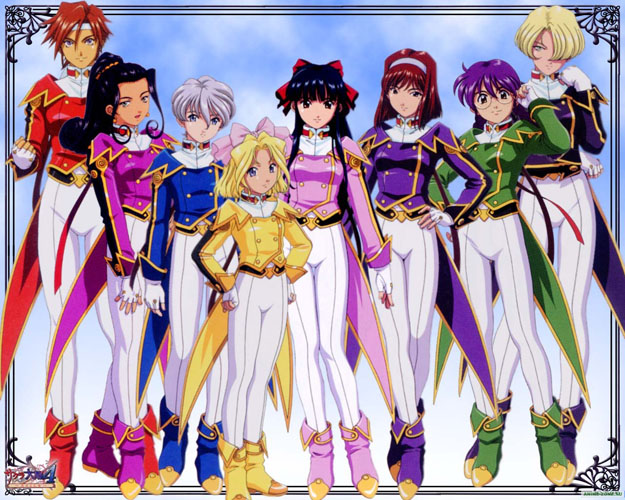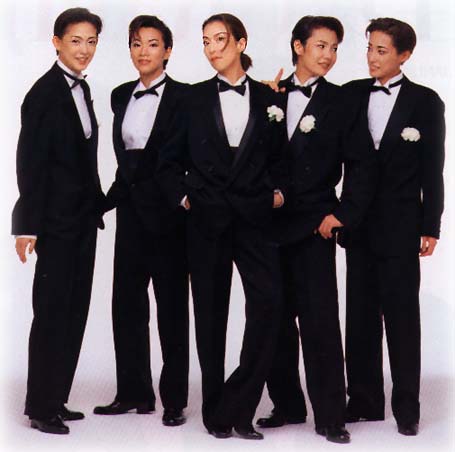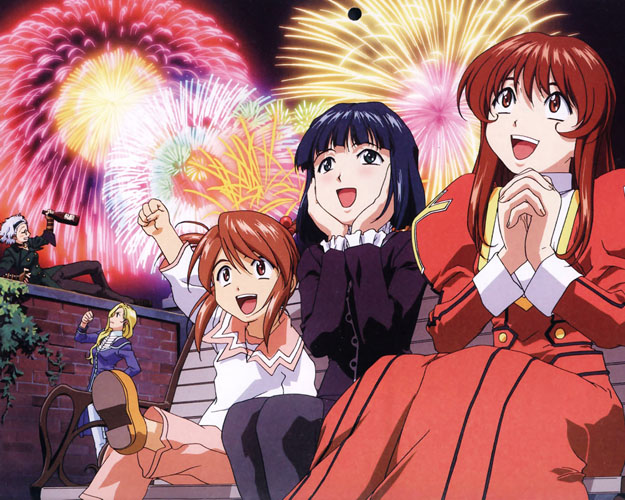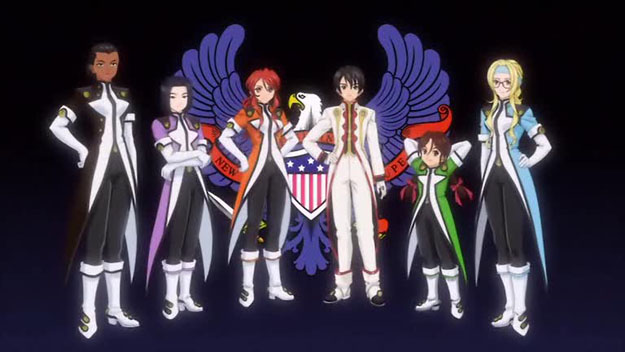Segalization heard that SEGAbits was running a Sakura Taisen-themed week, and we were happy to help commemorate the week by contributing something of our own. Sakura Taisen, or Sakura Wars as it’s known over here, is easily one of the most prominent SEGA franchises to never make it stateside. It is the poster child for what Segalization wants to correct. So please, read on as we go into Sakura Wars’ history, what it means to the Segalization mission and my own personal experience with the only game in the franchise that has been localized.
The Genesis of a Franchise
I recently bought Funimation’s re-relase of Sakura Wars: The Movie and was treated to some great insights into the origins of the franchise. Ouji Hiroi, founder of Red Company, had built a reputation for himself as a writer and was approached by SEGA to create an adventure game. Hiroi and the team he assembled let their ambitions guide them, and created a unique strategy/adventure game hybrid called Sakura Wars.
It might not be apparent, but Sakura Wars is a deeply personal work for Hiroi. When he was young he used to listen to his mother talk of the prominence of theater groups in her own youth. Hiroi’s grandmother was a performer in the Shochiku Revue, the second most prominent musical theater troupe after the Takarazuka Revue, which served as a direct inspiration for the troupe in the original game. He believes that the surge in theater groups during his mother’s time came from Japan’s infatuation with American jazz music during and after the United States’ occupation of Japan following WWII.
The Takarazuka Revue is an all-female performance troupe. The theaters at which they perform house shrines to which actresses offer prayers and the gods bestow their grace in the form of fortune and power. This is a reference to the ritual of kamiori, where maidens called down the gods by dancing and received their power. It’s also the inspiration for the mostly-women Sakura Wars teams, their cover story as a theater troupe, and the concept of using spiritual power to fuel mechanical suits and fight demons.
The Takarazuka Revue came into being during the Taisho era of Japan. When creating Sakura Wars and in particular the world of Tokyo, RED Entertainment’s commitment to detail and research prompted them to visit live musical performances and scout for talented singers to serve as voice actors for the games. They also researched steam locomotives to aid their understanding of designing steam-powered machines and animating their movements. Kousuke Fujishima, the original character designer, was apparently six months late in submitting a design for lead character Sakura Shinguji because he struggled to find just the right look for her. When Hiroi finally saw the final design on New Year’s Eve, he says he almost cried with happiness.
Sakura Wars and the Segalization Mission
Sakura Wars hasn’t had much luck in reaching the West until recently, unfortunately. It wasn’t until 2010 that America and Europe finally recieved a five year late localization of Sakura Wars 5: So Long My Love by NISAmerica. Besides that, there have actually been some opportunities for the franchise’s titles to see localization over time. A NISAmerica interview with Siliconera mentions that a few years ago another publisher attempted to secure the rights for the PSP remakes of Sakura Wars 1 and 2, but they were ultimately turned down by Sony at the time. Were a localization group to consider the PSP remakes, it may be worth thinking of distribution via PSN. The localization of the first Trails in the Sky game on PSP was a success and a pleasant surprise. There are also PC versions of every game in the franchise which would be perfect for Steam. SEGA has been enjoying commercial success on PC as of late, and between the thriving Steam community and the momentum of the PC Ports campaign, there exists a great opportunity for the franchise.
Segalization really believes in Sakura Wars as a part of our mission. In its prime it was a franchise juggernaut in Japan, with live musical performances, a movie, four OVA’s and a TV anime series, various spinoff games, and enviable sales. There was even a Sakura Wars cafe that ran until 2008. But beyond its success, it’s a very unique franchise. Sakura Wars blends SRPG and dating simulation elements, and is a fiercely optimistic series. It unabashedly champions belief in teamwork, an idea built into the collection of colorful personalities that work together to accomplish their goals. Each team even protects a romanticized vision of the city that acts as their home base.
My Experience with Sakura Wars 5
I recently completed Sakura Wars 5: So Long, My Love. When I first heard about the series, I was put off by the concept of playing a dating simulator and worried that the game would be too pandering or unbelievable to be able to genuinely relate to the characters. Thankfully, I was wrong, as there’s an earnest quality to the games that I appreciate. Romance and idealism are strong parts of the game’s identity. It helps that Sakura Wars features amazing music from Kohei Tanaka, and that the gameplay itself is great, especially in the form that it finally took with Sakura Wars 3. The move away from the isometric grid to a set amount of free movement was a great idea, and was a boon to the strategic aspects of the game.
Perhaps the most entertaining aspect of Sakura Wars 5 are the dialogue choices. It’s particularly fun to see how the characters you’re talking to react, and sometimes even funny to see them become irritated, but the dialogue choices can be genuinely interesting too. I remember at one point trying to convince Gemini not to be discouraged by being rejected by a snooty high class shop (Gemini is a character who struggles to reconcile all the facets of her personality, including wanting to be ladylike) and being met with skepticism because she thought my response was too enthusiastic to be believable. It was a great moment. It was the sort of moment that I hope everyone has a chance to experience by both playing Sakura Wars 5 and hopefully being able to play the other games some day.





Great post! I am slowly playing the first Sakura Wars game myself (attempting to learn some more Japanese in the process).The characters are lots of fun; I quite like the art, music, and dialogue in general. It’s easy to tell that a TON of effort was put into this. It’s very much a product of its era, but there’s still a general appeal to it IMO.
Console visual novels are actually becoming more of a thing in recent years in the West, especially when they add in some gameplay element (such as Sakura Wars’ tactical RPG segments). PSN would be perfect for the SW games, as they could join the likes of the Corpse Party series, Hakuouki, Sweet Fuse, Dangan Ronpa (and its upcoming sequel), and the upcoming XBlaze Code Embryo. Not to mention the Trails in the Sky series, the Persona games, and so on. Sakura Wars could work perfectly in such an environment, but it would take considerable effort–and the franchise isn’t even a big thing in Japan anymore, sadly. =/ Things can always change though; I hope something pulls through one day.
I spent a long time trying to figure out why or how visual novels picked up steam, and after all this time I still have no idea. Maybe it started with Ace Attorney and Zero Escape or something. =P. Apparently there’s a pretty big Japanese visual novel scene – at least larger than what I expected, but it’s all over the place from people making their own games (the origin of Corpse Party?) to stuff like Steins;Gate.
I totally embrace it though. I also think that a Sakura Wars localization is more likely to work now than in the past, but I think it might benefit from being remade. Update the battle system to something more resembling SW3, maybe some different graphics, whatever. I would probably expect to see it on Vita/handhelds or PC.
I imagine the Ace Attorney and Zero Escape games were a very big help; I think they got a lot of gamers to play visual novels without them realizing it, at any rate. =P My hope at the moment is 1) that Dangan Ronpa is as big of a hit as can be hoped for in a super-niche game (thus increasing console VN awareness), and 2) that the Vita version of the Hatsune Miku game does well enough for Sega to care about continuing to localize anything for that system. And perhaps 3) that Sega decides to do some kind of special Sakura Wars HD Collection: Origins: Revengeance or something in Japan, so that there’s something “new” that can be localized.
I feel like Steam would be a great way to release SW games, and it does seem like the VN scene is starting to exist in some small form there. There just isn’t really any particularly big names there yet, so I don’t know if anything will gain much traction there any time soon. I know the Higurashi games were greenlighted at least, but I question MangaGamer’s translation quality, and their insistence in sticking with the original artwork is going to be a huge turn-off for most people. Meanwhile I think Steins;Gate would have been perfect for Steam, but I haven’t heard of any effort being made to put it there. Will have to wait and see how that one turns out.
You know, I think releasing the games in the US and Europe might actually be one way of reviving the franchise. It would have to be a success of course, but I could see a digital release of the older Sakura Wars games doing unexpectedly well for Sega. That’s of course a very optimistic view but I could see it happen. The digital market is creating new opportunities, even for older games.
It might be weird to place this in a broader context, but some of what seems to pop up in indie games, the whole retro chic thing, perhaps bolsters a taste for something like Sakura Wars. As in, it reflects that there are quite a lot of people out there interested in a nostalgic title. This is a large part of the appeal of Bravely Default.